Nice Travel Guide
Nice is a magnificent city and a favourite with tourists. Ideally located on the French Riviera, on the southeast coast of France, it is no wonder that Nice, the unofficial capital of the Côte d'Azur, is the fifth biggest city in France and has visitors flocking to it year round.
The city has been inhabited for close to 400,000 years and got its name from the Greek, Nikaia, meaning 'City of Victory'. Today this culture-rich region is an eclectic fusion of ancient wonders and hedonistic pleasures, with sun, sea, shopping and fine dining competing with cultural and historical sightseeing opportunities. The hot summers and mild winters mean that visitors can appreciate the picturesque beaches in the region in all seasons, though the winters will likely be too cold for swimming.
Nice is a great shopping destination, boasting some glorious markets offering everything from traditional French fare to vintage clothing, as well as countless upmarket boutiques and shops for those looking to indulge in the famed French fashion culture. The charming old town offers many cultural delights, with impressive architecture ensuring that just a stroll through the area feels like an historical experience. Those with a taste for the celebrated French cuisine will also be spoiled for choice in Nice, which is known to be a gastronomical hub.
The traffic may be manic in Nice, and the beaches in the area are mostly pebbly, but the city has an undeniable romance and a glamourous reputation that has drawn the rich and famous for decades.
Things to do in Nice
For many visitors Nice is primarily a launching pad for a French Riviera beach holiday. The weather is certainly a major drawcard, and despite its pebbly beaches, the luxury offered by the hotels and restaurants along the coast ensures that visitors can enjoy a beach holiday in immense comfort.
For those less interested in the prospect of a tan, Nice is an historic and artistic city with a rich offering of galleries and museums. Favourite art museums include Musée d'Art Moderne et d'Art Contemporain, Musée Matisee, and Musée des Beaux-Arts Jules Chéret. History buffs will love the Musée de Paléontologie Humaine de Terra Amata, which is built on a prehistoric settlement and traces life on the Riviera 400,000 years ago.
Those looking for a religious experience will also not be disappointed as Nice is home to a number of impressive churches and religious institutions. The Cathédrale Saint Nicolas, a Russian orthodox church, is an unexpected attraction in this French city. The Monastery of Cimiez, which includes a church, a cemetery and a convent, remains an active monastery and is a joy to explore.
Of course, throughout France the magnificent cuisine is a draw for travellers and Nice is known to be a competitor in this regard. Visitors looking for simple fare will enjoy Nice's most famous market area, the Cours Saleya, where fresh produce and quaint sidewalk cafes can be found. Those in search of glamorous fine dining will find a diverse offering of fancy restaurants in Nice.
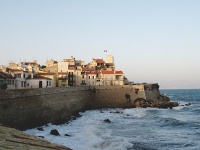
Antibes
Antibes is a few miles east of Cannes and a very popular excursion from the city. It has one of the best markets on the coast and an excellent Picasso museum in its ancient seafront castle, the 16th-century Château Grimaldi. Picasso was lent a room in the castle to use as a studio in 1946 and several extremely prolific months followed before he moved to Vallauris, leaving all his Antibes output to what is now the Musée Picasso.
Although Picasso donated other works later, most of the collection dates from this one period, including the best known work, Ulysses and his Sirens. Picasso himself is the subject of some of his paintings. There are also works here by some of Picasso's contemporaries, including Nicholas de Stael.
Alongside the castle is a cathedral that dates from medieval times; only the choir and apse survive from the original Romanesque building, while the nave and magnificent facade are Baroque. Nearby is a market that is open every morning over the summer and overflows with local produce.
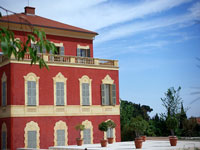
Musée Matisse
Renowned artist Henri Matisse spent a good portion of his life in Nice, living in the city from 1918 until 1954, and he is honoured by this museum. The Musée Matisse has several permanent collections, mostly painted in Nice and many donated by the artist and his heir. The better known paintings include Nude in an Armchair with a Green Plant (1937), Nymph in the Forest (1935/1942) and Portrait of Madame Matisse (1905). There is also an ensemble of drawings including The Creole Dancer (1951) and Blue Nude IV (1952). Seeing his nude sketches today, visitors will wonder why early critics denounced them as 'the female animal in all her shame and horror.'
The museum opened in 1963 and is located near the Hotel Regina where Matisse used to reside. It is very attractively housed and the striking, colourful building is surrounded by an olive grove. The exhibits give a lot of insight into Matisse's process and technique, which is a treat for enthusiasts. There are guided tours of the museum on offer in French, English, Italian and German.
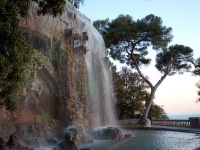
The Château de Nice
The Chateau de Nice was built in the 11th century for military purposes. It is located in Vieux Nice and features on most sightseeing tours of Nice, but the fortress itself is long gone and only some ruins remain. The attraction for visitors is the Parc du Chateau (or Colline du Chateau, that is, the Castle Hill), which surrounds the former fortress.
With wonderful views over the rooftops and gleaming mosaic tiles of Old Nice, along the sweep of the Promenade des Anglais and out to the Mediterranean, the Château park is a lovely attraction in itself and a good place for visitors to orientate themselves within the city. Visitors can take cool walks in the shade of the trees, enjoy the large grassy park, explore the Roman ruins and visit the waterfall; it is a pretty and peaceful place to spend an afternoon.
The fortress was razed by Louis XIV in 1706 and the only part left standing is the 16th-century Tour Bellanda, a tower which now houses the Naval Museum. The cemetery where Garibaldi is buried covers the northwest side of the park. To reach the park, visitors can either climb the steps at the front, from the Quai des Etats Unis, or for those who aren't up to it an elevator is available.

Phoenix Parc Floral de Nice
Just outside of Nice, near the airport, this vast tourist attraction includes a botanical garden and numerous animals, among other things. 2,500 species of plant are collected in the Phoenix Parc Floral and some of them are very rare; the tropical greenhouse is one of the largest in Europe. There is a greenhouse dedicated exclusively to orchids and another that features the biodiversity of Southern Africa.
The aviary contains many species of exotic birds and there are beautiful butterflies in one of the greenhouses and an insect zoo, as well as several aquariums and a big lake containing birds and turtles. There is also a tacky theme park with automated dinosaurs and mock Mayan temples that will probably delight children.
One of the highlights of the park is the Musée Départemental des Artes Asiatiques the Museum of Asian Arts), which houses a collection of ethnographic artefacts, including silk goods and pottery, as well as traditional and contemporary art. This is a great excursion for the whole family and should happily occupy everybody for a few hours at least.
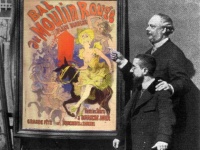
Musée des Beaux-Arts Jules Chéret
Housed in the former residence of the Ukrainian Princess Kotchubey is a fine collection of 19th and 20th century art, including works by Boudin, Ziem, Raffaelli, Renoir and Monet. The Musée des Beaux-Arts Jules Chéret gallery includes great sculptures as well as paintings, including works by J. B. Carpeaux, Rude and Rodin. There is also an important collection devoted to the masters of the Second Empire and Belle Epoque, a great attraction for visitors to Nice. The building is truly lovely and would be worth seeing even if it didn't house a museum, and there is a lovely little garden to sit in as well. The collection is nicely arranged in spacious rooms and there is a pleasant, airy feel to the place. It may not take very long to see everything, but art lovers will be richly rewarded by a visit.
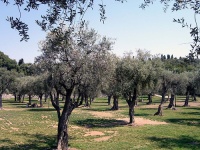
Cimiez
The Monastery of Cimiez, which includes a church, a cemetery and a convent where some Franciscan friars still live, is located in a residential area in the hills above the hustle and bustle of the city. The convent houses the Musee Franciscain, which is decorated with 17th-century frescoes, and exhibits a monk's cell so visitors can get an idea of how the austere religious life is lived.
The chapel dates from the 17th century and the lovely gardens have sweeping views across Nice. Apart from the monastery, the grounds of Cimiez include a large park set amid olive groves, the Archaeology Museum and Matisse Museum. Also within the gardens, the Musée National Message Biblique Marc-Chagall displays some 450 of the artist's oils, drawings, pastels, lithographs, sculptures, and ceramics. There is plenty to see and do in this picturesque area, which promises visitors a break from the bustle of the city.
During a couple of weeks in August, Cimiez is the site of the Nice Jazz Festival, with music being played every day until midnight and performed on three stages, in the olive groves and the Roman Amphitheatre. It is an hour's walk, or a short bus ride from the town centre.
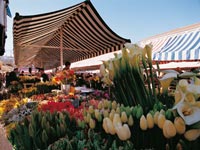
Cours Saleya Food and Flower Market
Nice's most famous market area, the Cours Saleya, bustles with activity every day and is a riot of colour and fresh smells. Cours Saleya is the famous promenade in the southwest of Vieux Nice. A wonderful attraction for visitors, and beloved by locals, the market is packed with flowers, fresh produce, souvenir shops and sidewalk cafés.
On Mondays the flowers and fresh produce disappear and instead the area hosts a large flea market and an antiques market; even those not looking to buy anything can enjoy the food and soak up the vibrant atmosphere. The promenade and square that house the stalls are impressive too, and the backdrop of venerable buildings contrasts pleasantly with the riotous colour and frivolity of the market.
It is best to arrive as early as possible to enjoy the market before the hordes descend. Also, those planning to do some shopping should be sure to have plenty of change and small bills because the merchants do not like to break large bills and may refuse if they don't have sufficient change.
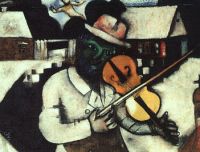
Marc Chagall Museum
Celebrated modernist artist Marc Chagall (1887 to 1985), though born in the Soviet Union, spent much of his career in France. The Marc Chagall Museum in Nice has the largest permanent collection of his works, including his Biblical Message Cycle, comprising 17 large-scale paintings depicting scenes from the Bible. The museum contains a dazzling array of paintings, sculptures, stained-glass windows and mosaics, and the vivid colours and dreamlike quality of Chagall's work make the space come alive.
It is a truly well-designed museum that captures some of the joyful quality of Chagall's work, even though it is simple and small. Interestingly, Chagall himself positioned many of the works, as he was alive when the museum was built, and this goes some way to explaining how well everything seems to fit. There is a great film on Chagall's life running at the museum and it is really worth watching. Visitors can also listen to audio recordings of explanations for each of the paintings and this hugely enriches the experience, particularly for those who aren't familiar with the artist. The museum has attractive gardens to wander in and a small cafe for refreshments.
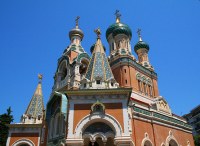
St Nicholas Russian Orthodox Cathedral
Nice and the French Riviera were fashionable holiday resorts for Russian nobility in the late 19th and early 20th centuries, leading to a close relationship between the regions that culminated in the rose-pink Russian Orthodox Cathedral, one of the most beautiful buildings in Nice. Topped with the onion-shaped domes typical of Russian cathedrals, the church was built by Tsar Nicholas II in 1912 and is the largest of its kind outside of Russia. The interior of the cathedral is also magnificent; it is in the shape of a Greek cross and boasts some wonderful frescos, woodwork and art, as well as notable goldsmith's work. The odd image of the Russian spires set against the background of palm trees on the Cote d'Azur is one of the most interesting sights in Nice. Strolling past the cathedral and getting some photos is a must and it is well worth going inside as well.
Getting Around
Nice city centre is small enough to get around on foot. Buses and trams are the main form of public transport and cover most of the city until midnight. Taxis are not a popular means of transport, as they are known to overcharge tourists and are difficult to flag down. The central train station takes commuters to other towns along the Riviera such as Antibes, Cannes, Monaco and more.
Nice Climate and Weather
Nice has a typically Mediterranean climate with hot summers and mild winters. During the hottest summer months, particularly in August, temperatures often climb above 86F (30C), while maximum temperatures in winter are about 59F (15C). August is the hottest month and January is the coldest. Rainfall is moderate and mostly occurs during winter; October is usually the wettest month. Snowfall is extremely rare. Nice is sheltered from the wind by the hills around the city so only the occasional mistral wind causes a stir.
Summer is peak tourist season in Nice and this is the best time of year to visit if travellers are going to enjoy the beaches. However, the spring months of April and May can be lovely and it is far less crowded. Visitors will get plenty of sun but the water will be too cold for swimming, making spring the ideal time to go if they want a sightseeing holiday. Autumn can be rainy but the weather is mild and this can also be a pleasant time to visit Nice.
France travel info
Electricity
The electrical current is 230 volts, 50Hz. European two-pin plugs are standard.
Language
French is the official language.
Money
The euro (EUR) is the official currency in France. Currency can be exchanged at banks, bureaux de change and some large hotels, though visitors will get a better exchange rate at the ATMs. Major credit cards are widely accepted, particularly in major tourist destinations. Foreign currency is not accepted.
Tipping
Most restaurants and hotels automatically add a 15 percent service charge so a tip is not necessary, although another two to three percent is customary if the service has been good. If service is not included then 15 percent is customary. Taxi drivers expect 10 to 15 percent of the fare, and hairdressers about 10 percent. Hotel staff generally receive about €1.50 a day and tips of about €1 are given to washroom and cloakroom attendants and museum tour guides. Tour bus drivers and guides are also tipped.
Health
No particular vaccinations or medications are required for travel to France. The prevalence of certain tick-borne infections, such as lyme disease, tularemia, tick-borne encephalitis, and rickettsial diseases, mean that travellers should take precautions against ticks if they are travelling in rural or forested areas in warm weather. French hospitals and health facilities are first class. Visitors from other EU countries are entitled to discounted medical treatment and medicines on presentation of a European Health Insurance Card (EHIC). After Brexit, the Global Health Insurance Card (GHIC) replaced the European Health Insurance Card (EHIC) for UK citizens. The GHIC allows UK citizens access to state healthcare during visits to the EU. The GHIC is not valid in Norway, Iceland, Liechtenstein or Switzerland, nor is it an alternative to travel insurance. Otherwise, doctors and hospitals often expect immediate cash payment for health services, so medical insurance is advised.
Safety
While violent crime against tourists is rare and holidays in France are generally trouble-free, visitors should be mindful that security has been heightened following a series of terrorist attacks in recent years, particularly in the transport sector. Unattended luggage left in public places will be removed or destroyed by security staff. While generally safe, visitors to France are advised to take precautions against petty theft and to ensure their personal safety. Thieves and pickpockets operate on the metro and around airports. Theft from cars is prevalent, particularly in the south, around Marseilles, and in Corsica. Tourists are advised to conceal bags and purses even when driving, and to never leave valuables unattended in the car. Bag snatching is also common, particularly on public transport and in shopping centres, and visitors should also be vigilant of luggage while loading bags into and out of hire cars at airports.
Local customs
French culture is of paramount importance to the French people. In an increasingly Americanised world they feel duty-bound to protect it, and it is appreciated if visitors can speak a few words of French. Locals do not respond well to being shouted at in English. While the food is second to none, foreigners may find the service in many restaurants sloppy. Waiters can appear rude (particularly in Paris) and take their time. This is just the way they are. Traditional games such as pétanque (similar to lawn bowling but played on gravel) are popular in village squares, but the national sports are football, rugby and cycling. Smoking in public places is not allowed and will incur heavy fines.
Doing business
Business etiquette is important in France. A smart, fashionable sense of dress is common as the nation prides itself on haut couture. Punctuality is not always observed though and the 'fashionably late' tactic may be applied. A handshake is the common form of greeting for men and women upon first introductions. Titles are important and the person is to be referred to as 'monsieur' (Mr.), 'madame' (Mrs.), or 'mademoiselle' (Ms.). Meetings usually occur over lunches, and the French are known to enjoy food. Business hours are generally 9am to 6pm, Monday to Friday.
Duty free
Travellers from non-EU countries over 17 years of age entering France can bring in the following items duty-free: 200 cigarettes, or 100 cigarillos, or 50 cigars, or 250g tobacco. Four litres of wine and 16 litres of beer and one litre of spirits over 22 percent or two litres of alcoholic beverages less than 22 percent. Other goods up to the value of €430 for air and sea travellers, and €300 for other travellers (reduced to €175 for children under 15 years of age).
Communications
The international access code for France is +33. Travellers can purchase local prepaid SIM cards for unlocked phones or use eSIMs if their cellular providers support it on their networks. Free WiFi is available in most hotels, cafes, restaurants and similar establishments.
Passport & Visa
The borderless region known as the Schengen Area includes the following countries: Austria, Belgium, Czech Republic, Denmark, Estonia, Finland, France, Germany, Greece, Hungary, Iceland, Italy, Latvia, Lithuania, Luxembourg, Malta, The Netherlands, Norway, Poland, Portugal, Slovakia, Slovenia, Spain, Sweden, and Switzerland. All these countries issue a standard Schengen visa that has a multiple entry option, and which allows the holder to travel freely within the borders of all the aforementioned countries.
Additionally, travellers must hold sufficient funds to cover their stay in France, and proof of repatriation (a return or onward ticket, and the necessary travel documentation for their next destination). Note that Schengen visas, if required, are also valid for French Guiana and French West Indies and Reunion, provided that the Schengen visa is endorsed "Also valid for French territories being in observation of the respective French territories". We recommend that passports always be valid for six months after intended period of travel.
Entry requirements
US citizens must have a passport that is valid for at least three months after their intended stay in France. No visa is required for a stay of up to 90 days within a 180 day period.
UK citizens must have a passport that is valid for at least three months after their intended stay in France. No visa is required for a stay of up to 90 days within a 180 day period.
Canadian citizens must have a passport that is valid for three months after their intended stay in France. No visa is required for a stay of up to 90 days in a 180 day period.
Australian citizens must have a passport that is valid for three months after their intended stay in France. No visa is required for a stay of up to 90 days in a 180 day period.
South African citizens must have a passport that is valid for three months after their intended stay, and a valid Schengen visa, to enter France. Note that entry and transit will be refused to holders of Temporary passports.
Irish citizens must have a passport that is valid on arrival. No visa is required.
New Zealand citizens must have a passport that is valid for three months after their intended stay in France. No visa is required for a stay of up to 90 days in a 180 day period.
Useful contacts
Maison de la France (Tourist Information Agency), Paris: www.france.fr/fr
112 (General emergency)Embassies / consulates in other countries
French Embassy, Washington DC, United States: +1 202 944 6195.
French Embassy, London, United Kingdom: +44 (0)20 7073 1000.
French Embassy, Ottawa, Canada: +1 613 789 1795.
French Embassy, Canberra, Australia: +61 (0)2 6216 0100.
French Embassy, Pretoria, South Africa: +27 (0)12 425 1600.
French Embassy, Dublin, Ireland: +353 (0)1 277 5000.
French Embassy, Wellington, New Zealand: +64 (0)4 384 2555.
Embassies / consulates in France
US Embassy, Paris: +33 (0)1 4312 2222.
British Embassy, Paris: +33 (0)1 4451 3100.
Canadian Embassy, Paris: +33 (0)1 4443 2900.
Australian Embassy, Paris: +33 (0)1 4059 3300.
South African Embassy, Paris: +33 (0)1 5359 2323.
Irish Embassy, Paris: +33 (0)1 4417 6700.
New Zealand Embassy, Paris: +33 (0)1 4501 4343.



